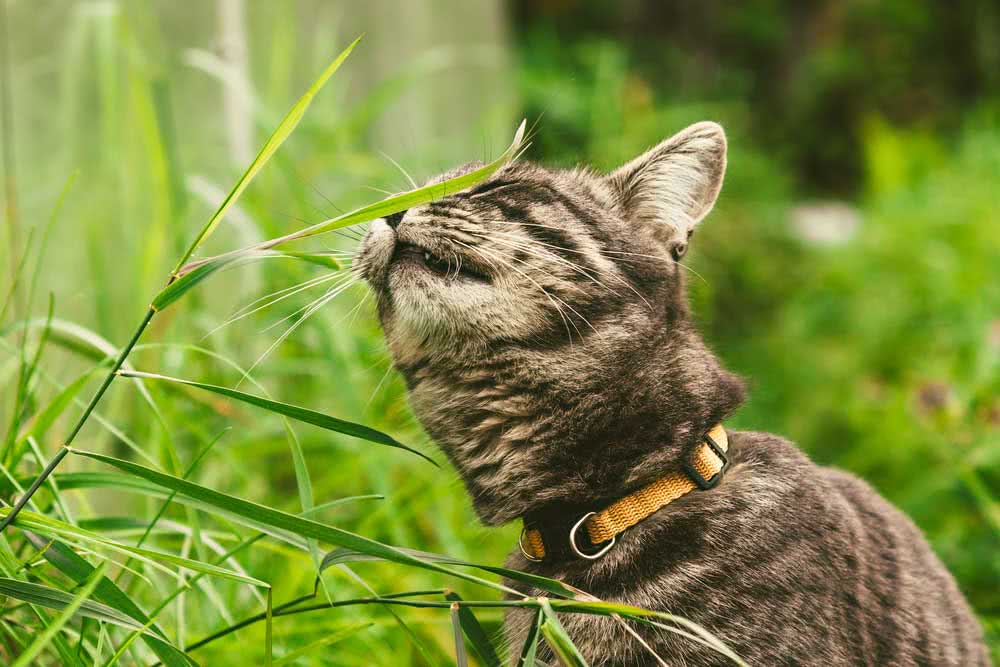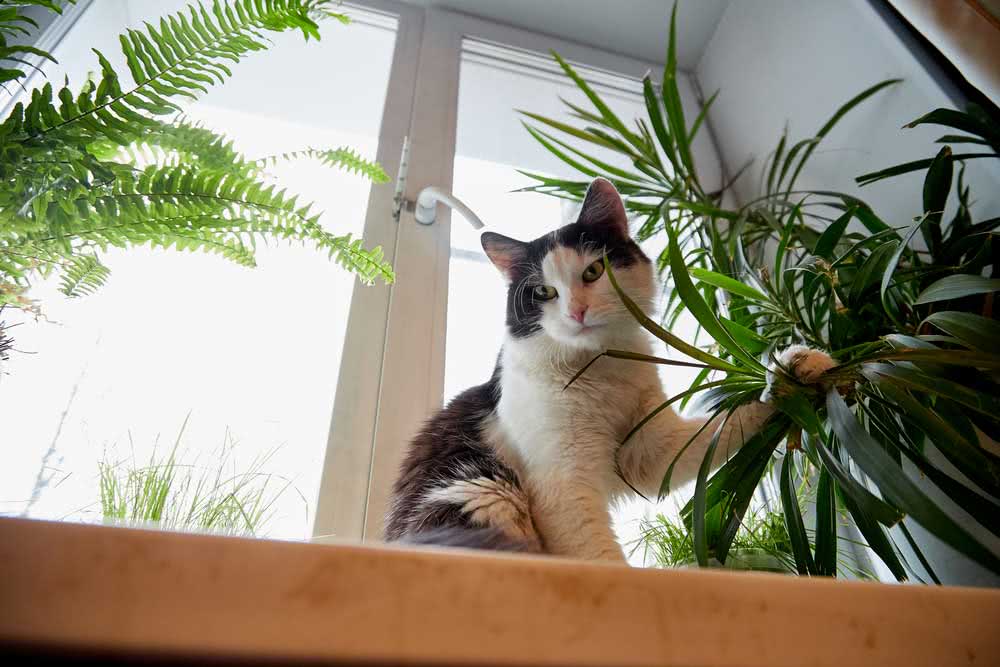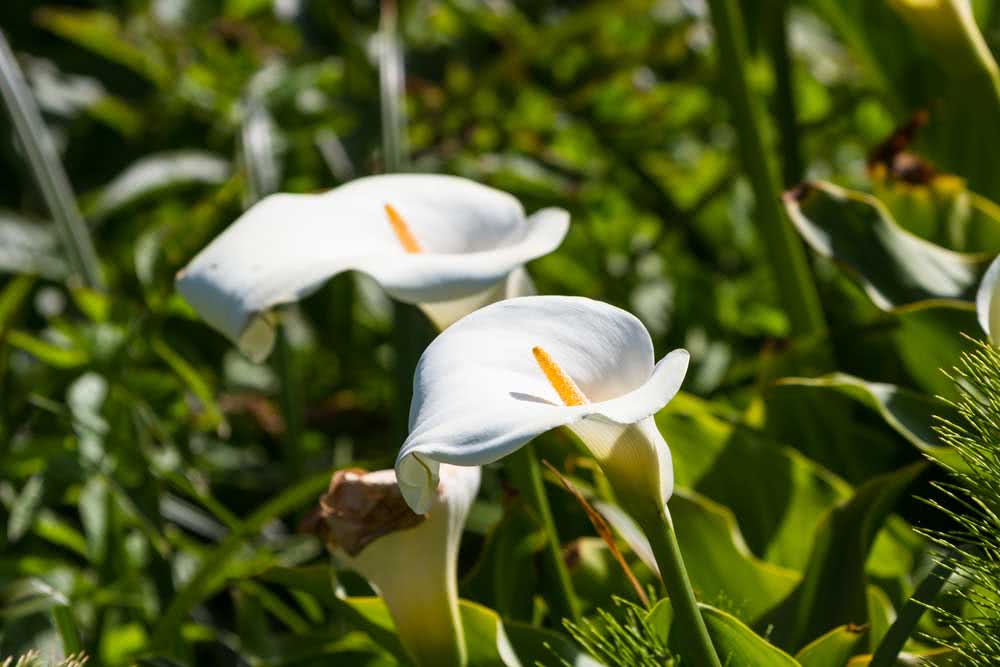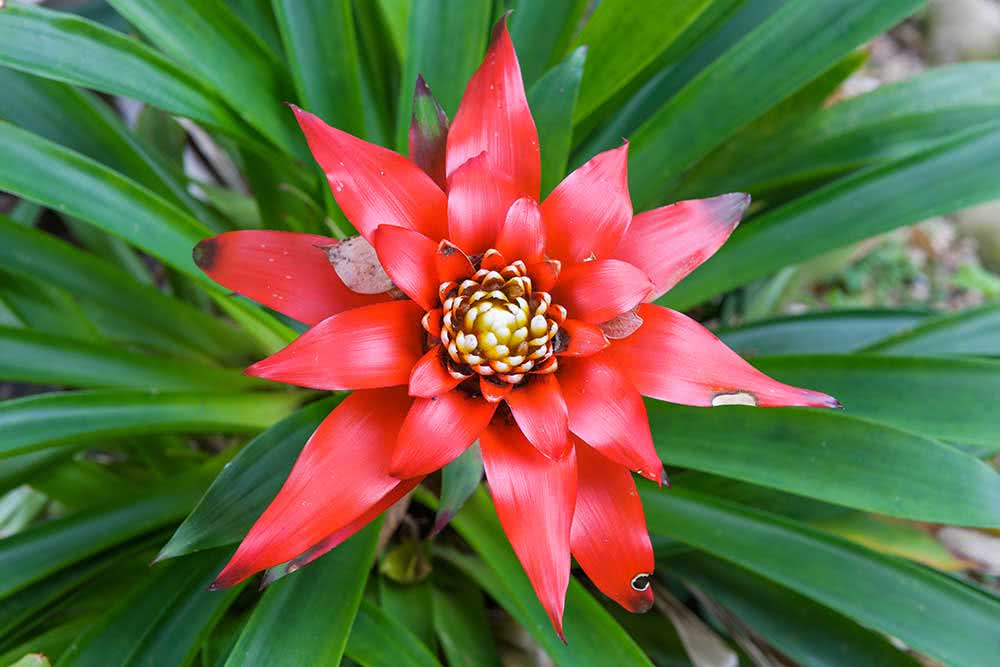Do you have a kitten at home? So you need to know which plants are toxic to cats.
This is very important to ensure the health and well-being of your feline without having to give up decorating the house with plants.
So let’s find out which plants are toxic to cats?
Why do cats eat plants?

There are several reasons that can make a cat eat plants. He may feel bored, stressed or suffering from digestive and intestinal problems.
All of this can make your kitten decide to grab some leaves from its pot.
In general, cats know what types of plants they can eat, but if they don’t find it, they may end up looking for the one at their disposal.
Another thing that can happen is that the cat is moved by curiosity and an adventurous spirit, especially the kittens. In this case, there is not much to do, except to take the plants away from the animal.
In other situations, you can prevent the cat from being attracted to plants by always keeping him well fed, hydrated and with the deworming up to date.
Also take the opportunity to offer toys that stimulate him, so your kitten is not bored and the risk of him touching his plants to pass the time is less.
What are the symptoms of plant poisoning in cats

But if your cat has ingested any toxic plants you need to be aware of the symptoms.
Most of the time it is common for cats to manifest:
- Vomiting
- Diarrhea
- Loss of appetite
- Skin irritation (skin)
- Loss of motor coordination
- Apathy and lack of interest in carrying out activities
It is also important to understand the degree of intoxication which can vary greatly depending on the size and age of the cat, as well as the type of plant and the amount eaten.
That is why it is not possible to generalize the effects that plants can cause. The best thing is to observe and be attentive to the signs that the animal shows.
The most common type of reaction is skin poisoning, affecting the animal’s skin and mucous membranes, causing allergy, discomfort and irritation. In this case, intoxication is not always caused by ingestion of the plant, often a minimum contact is enough to provoke these reactions.
In cases of ingestion, however, the most common reactions are vomiting and diarrhea. Depending on the quantity and species of the plant, the consequences can be severe.
The same goes for neurological reactions that, although they are more rare, can lead to the death of the animal. Symptoms in this case include loss of motor coordination and seizures.
What to do in case of poisoning
The best thing to do in case your cat suffers from plant poisoning is to take him to the vet.
Avoid homemade formulas that can hinder medical treatment and find out which plant was ingested by the animal to facilitate care.
Care with the use of plants at home
Plants and cats can live harmoniously, believe me. But for this it is essential to take some simple precautions, write them all down:
- Plants with a high degree of toxicity should be avoided, however much you like it, it is better not to take the risk.
- Plants with less toxic potential, on the other hand, should be kept in safe places and preferably at the top. However, anyone who has a cat at home knows that the cat loves to climb and that perhaps putting the plants on top does not solve the problem. If your cat has this behavior, it is best to avoid using plants in places that the animal can reach.
- Cats like to play with objects and other suspended artifacts that move in front of him. This means that a hanging plant with fallen leaves can easily become a toy for your feline. Therefore, before using a pending plant, make sure it is not toxic.
List of toxic plants for cats

Here is a list of the 17 most common toxic plants for cats indoors:
1. No one can with me
How could I not be with Me Nobody Can (Diffenbachia) opens the list.
Just by the name you can already know that the plant did not come into the world as a joke.
Owner of a beautiful and exuberant foliage, Comigo Nobody Can keep a high degree of toxicity in its leaves and which can be extremely harmful not only for cats, but for dogs and small children.
The plant can cause intense irritation in the mucous membranes of the mouth, pharynx and larynx, in addition to pain, difficulty breathing, nausea and vomiting.
2. Glass of milk
The Glass of Milk (Zantedeschia aethiopica) is another beautiful plant that also has toxic potential.
The symptoms are similar to those caused by Comigo Nobody Can, including mucosal irritation, pain, nausea, vomiting and excessive salivation.
3. Lilies
In this category you can include both fragrant lilies and peace lilies (Spathiphyllum wallisii).
This exotic flower plant is very toxic to domestic animals and when ingested it can cause symptoms such as irritation in the mucous membranes of the mouth, difficulty breathing and swallowing. In more severe cases, the ingestion of any part of the lily can cause neurological and kidney problems.
4. Anthurium
Anthurium (Anthurium spp) is another one of those super popular plants, but they are also toxic.
Anthurium poisoning can cause a burning sensation and swelling of the mouth and throat, suffocation, excessive salivation, vomiting and diarrhea.
5. Sword of Saint George
The Sword of Saint George (Sansevieria trifasciata) also enters the ranking of plants that must be carefully cultivated by those who have pets at home.
In case of ingestion, the plant can cause symptoms such as difficulty in breathing and irritation in the mucous membranes of the mouth.
6. Violet
Charming and delicate, violet (Viola odorata) does not seem, but it is toxic to cats.
Ingestion of the stem and seeds of the plant causes vomiting, diarrhea, difficulty breathing and even gastritis.
7. Cyclamen
Cyclamen (Cyclamem) is much appreciated as an ornamental plant, but it can be a problem for those who have cats.
The good news is that only the roots of the plant are toxic, so if it is grown in a place that is difficult to access it will most likely not present any danger.
8. Parrot’s Beak
The Beak of Parrot or Crown of Christ plant (Uphorbia pulcherrima), as it is also known, is very traditional at Christmas time due to the combination of its red and green leaves.
However, simple contact with the animal’s skin can cause allergies and irritations. When ingested, the plant causes vomiting and diarrhea.
9. Azalea
Azalea (Azalea sp) is a plant widely used in ornamentation inside houses and gardens, however it is toxic to animals.
If ingested, Azaleia can cause stomach pain and even cardiac dysfunction.
10. Tulip
The tulips are beautiful! But they are toxic too. So be careful when decorating the house with this flower.
In case of ingestion, the plant can cause excessive salivation, vomiting, diarrhea, loss of appetite, irritation in the mouth and, in more serious cases, increased heart rate and seizures.
11. Hydrangea
Hydrangea (Hydrangea macrophylla) is another plant that we didn’t want to see on that list.
But unfortunately she is here. Hydrangea is very toxic and can be very dangerous for your pet. That’s because the hydrangea has a substance called glycoside that turns into cyanide when it reaches the stomach. And everyone knows that cyanide is a very dangerous poison.
In pets, ingesting the hydrangea causes diarrhea, vomiting and severe abdominal pain. In large quantities, the plant can reach the nervous system, causing motor coordination problems.
12. Asparagus-fern
There is a type of fern that is toxic to dogs and cats. Her name is fern asparagus (Sparagus Setaceus). This plant has small, thin leaves, but don’t be fooled by its delicate appearance.
When ingested, asparagus fern attacks the blood system and can cause anemia.
13. Boa constrictor
The boa constrictor (Epipremnum pinnatum) is one of the most coveted plants today for interior decoration. The problem is that it can harm your feline.
The plant causes swelling in the mucous membranes and gastrointestinal problems.
14. Aloe Vera
Aloe Vera is wonderful for many things, except for cats. The gel inside the leaves is toxic to animals.
15. Adam’s Rib
Adam’s Rib (Monstera delicious) is another darling in interior decoration, but the leaves are toxic to pets.
Symptoms of plant poisoning include vomiting, diarrhea, itching and burning on the tongue.
16. oleander
The oleander (Nerium oleander) is a mini garden tree very poisonous to animals and humans.
Ingestion of any part of the plant can cause symptoms such as vomiting, diarrhea, paralysis, arrhythmia, dyspnoea. Depending on the amount ingested it can still lead to coma and even death.
17. Castor bean
Castor (Ricinus communis) is a very common plant in backyards and gardens. But it is not only the plant that is toxic, its derivatives too, especially the castor bean cake used as fertilizer in pots.
Therefore, if you usually use this type of fertilizer, it is advisable to replace it with one that does not present toxicity.
List of non-toxic plants for cats

Following are 10 plants that are not toxic to cats. Check out:
- Areca Palm
- Orchids
- Bromeliads
- Confetti
- Gerberas
- May’s flower
- Elephant Paw
- Sunflower
- Lavender
- Rosemary



